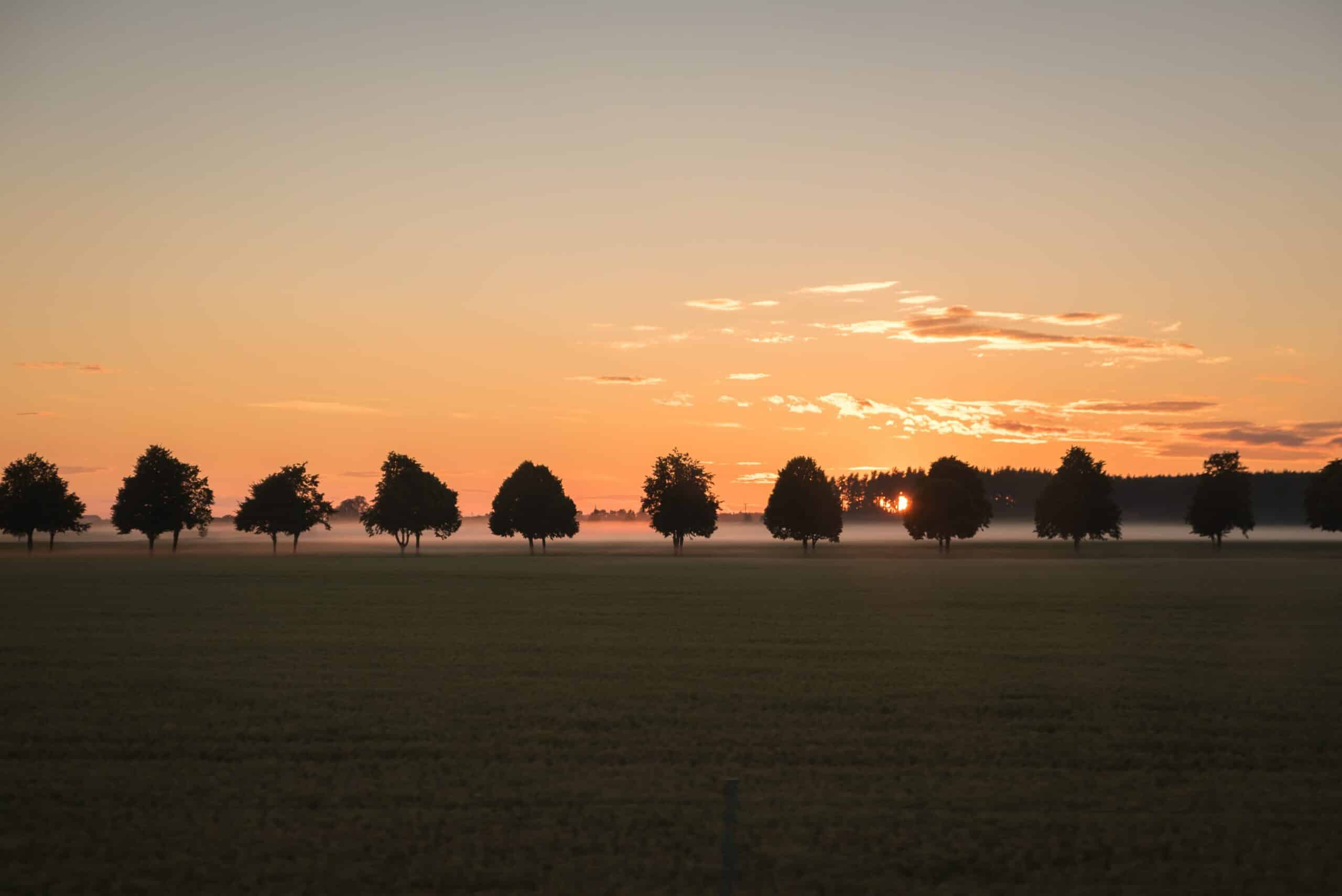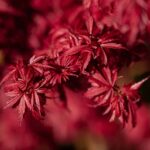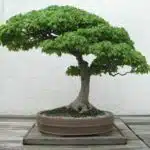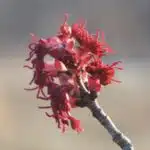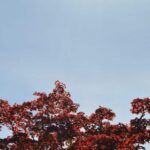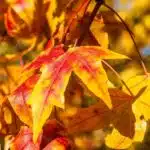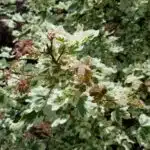Shade trees are a blessing in disguise, providing us with shelter and comfort in the sweltering heat of summer. For gardeners looking for the perfect tree to add to their landscape, there is no shortage of options. But with so many trees on the market, it can be tricky to decide which one will thrive in shady conditions without fail. To help you find the right fit for your garden, here’s a look at some of the best trees that grow in shade for years, each offering its own unique benefits and beauty.
As any experienced gardener knows, selecting the best trees for shade requires some careful consideration. Shade-loving trees tend to have more delicate root systems than those that need full sun, and they often struggle when planted too close together or beneath taller trees. It’s also important to assess soil drainage and monitor water usage before choosing a tree so that it can grow optimally in its environment.
Fortunately, there are plenty of excellent options available that fit these criteria perfectly. From traditional favorites like maples and oaks to lesser known species such as dogwoods and bald cypresses, this list features some of the hardiest shade-tolerant trees out there. Whether you’re looking to create a shady retreat or simply add interest to your landscape design, these 11 top contenders should do the trick!
What Trees Thrive In Shade?
Trees have long been a symbol of life and growth, their deep roots reaching into the Earth to nourish us all with oxygen. In a world that is ever-evolving, these majestic creatures remain steadfast in their commitment to providing us with shade and beauty. But what trees thrive in shaded spaces? Let’s dive into the world of shade trees to explore some of the best species for years of growth and beauty.
When selecting trees that can withstand shady environments, it’s important to consider their environment as well as their characteristics. Trees such as maples, oaks and beeches are more tolerant of lower light levels than other species, making them ideal for shady gardens. Additionally, plants such as dogwoods and magnolias prefer partial shade and can bring beautiful flowers and foliage to your garden.
Of course, there are always exceptions to every rule – some species may require more sunlight than others. It is always important to research each particular tree before planting it in order to ensure that it will receive enough light for optimal growth. With thoughtful consideration of your garden’s environment, you can select the perfect tree for years of enjoyment!
No matter what type of tree you choose for your shaded space, proper care is essential in order for the tree to thrive over time. Proper watering and fertilization will help ensure your chosen species grows healthy and strong while providing natural beauty in any setting!
Types Of Shade Trees
Shade trees are a great choice for any garden or landscape because of their ability to thrive in areas with minimal sunlight. There are a variety of shade trees that can be found in both deciduous and evergreen varieties, offering a range of colors, sizes, shapes, and textures. When selecting the right shade tree for your needs, there’s no one-size-fits-all solution – but some species stand out.
The most popular shade trees include the American hornbeam (Carpinus caroliniana), red maple (Acer rubrum), white ash (Fraxinus americana), sycamore (Platanus occidentalis), and Chinese pistache (Pistacia chinensis). These trees have many features that make them ideal for shady environments: they produce vibrant fall colors; are resistant to pest infestations; and grow quickly without taking up too much space. Other popular species include flowering cherry (Prunus serrulata) and dogwood (Cornus florida). These trees offer stunning blooms in springtime and come in a variety of colors and sizes.
When choosing a shade tree, it’s important to consider its growth rate as well as how it will fit into the surrounding landscape. If you’re looking for a quick fix, fast-growing varieties such as red maple or Chinese pistache may be best. But if you want something that will last decades, slower growing varieties like American hornbeam or sycamore might be better suited to your needs. Ultimately, the type of shade tree you choose should depend on your specific situation and the results you’re hoping to achieve.
Benefits Of Shade Trees
Shade trees come with numerous benefits. They provide a sense of beauty and serenity to the space that they occupy, as well as practical advantages in terms of energy savings, air purification, and improved soil health. In this section, I will outline three key benefits of shade trees:
Aesthetic Value: Shade trees add visual interest to any outdoor space. Their leafy canopies create dappled shade and cool breezes on hot summer days, while their seasonal changes give yards a unique charm throughout the year. With careful selection, you can create an attractive landscape that will remain vibrant for years to come.
Environmental Benefits: Shade trees can help reduce your energy bills by blocking direct sunlight during peak hours of the day. They also act as natural air purifiers by absorbing pollutants like dust and smog from the air around them. Finally, their root systems improve soil health by providing nutrients and preventing erosion.
Health Benefits: The presence of shade trees has been shown to improve both physical and mental wellbeing in humans, reducing stress levels and encouraging people to spend more time outdoors. Additionally, they aid in flood prevention by providing a buffer between heavy rainfall and buildings or other structures on the ground below them.
These are just some of the reasons why shade trees are so valuable for our environment—and why it’s important to protect existing ones while planting new ones responsibly. As we move into the next section about planting and caring for these incredible organisms, remember that when done properly these trees will bring many benefits to our homes and communities for generations to come!
Planting And Caring For Shade Trees
Planting and caring for shade trees is a rewarding experience, allowing nature to truly flourish in your outdoor space. Much like a delicate flower, these trees require nurturing and attention to see the best results. Here, like a gardener’s handbook, I shall guide you through the process of providing the perfect home for your new shade tree.
As with any planting project, it is important to consider soil conditions before anything else. Loose soil that drains well is ideal for most shade trees. If the soil at your chosen site is compacted or wet, it would be best to amend it with compost or other organic matter before planting. Additionally, ensure that your tree is well-spaced from buildings and other plants so that its roots will have plenty of room to grow without obstruction.
Finally, once planted in their ideal environment and well-cared for with regular watering and mulching, these majestic trees can provide years of beauty – from their vibrant foliage in summer to their sweetly scented fruits in fall. With patience and perseverance, you’ll soon find yourself surrounded by a peaceful oasis of greenery!
Japanese Maple
The Japanese maple is a stunning addition to the garden. It’s like a ballerina gracefully dancing in the shade, its graceful leaves providing an ever-changing curtain of beauty for all who watch it. With its unique form and delicate foliage, it stands out from other trees that thrive in shady areas.
This species of tree is native to Japan, but can be grown in many climates around the world. Its slow growth rate makes it ideal for small gardens where space is limited. When well-cared for and planted in the right spot, it will provide years of enjoyment with its beautiful shape and colors.
When planting a Japanese Maple tree, make sure that you give it plenty of room to grow and enough soil to keep its roots healthy. Choose a planting site that has plenty of organic matter and slightly acidic soil. And if you have cold winter temperatures in your area, consider using mulch or covering the root zone with burlap during those months to protect your tree from extreme temperature fluctuations.
TIP: All maples need supplemental water during dry periods, so make sure to check your Japanese maple’s soil regularly throughout the growing season and water when needed.
Redbud
The redbud (Cercis canadensis) stands out among shade trees due to its vibrant color and its ability to thrive in partial or deep shade. This deciduous tree is prized for its heart-shaped leaves and pink-white flowers, which appear in the springtime. As such, it’s a great choice for anyone looking for a year-round splash of color in the landscape.
Unlike other trees that require full sun to produce good foliage, the redbud does well even when planted in light shade. Plus, it doesn’t require a lot of care; once established it can tolerate a variety of conditions including drought and clay soils. It can also be pruned into an attractive shape or used as an attractive specimen tree.
Redbuds are hardy from USDA zones 4 through 9, so they’re suitable for use in most parts of the country. Despite their delicate appearance, they’re quite resilient trees and can live up to 50 years with proper care. So if you’re seeking a beautiful tree that will provide colorful blooms each spring and thrive in the shade, look no further than the redbud!
Dogwood
When it comes to trees that can thrive in the shade, the seventh on the list is sure to capture your attention. Its beauty is undeniable, and its adaptability makes it an ideal choice for any setting. We’re talking about the dogwood tree! This stunning species of tree is well-known for its bright blooms and distinctive bark.
As a botanist and gardener, I’m always excited to recommend this particular type of tree. It’s easy to cultivate, grows quickly enough to provide quick coverage and can tolerate poor soil conditions with ease. Its leaves are also resistant to diseases, so you don’t have to worry about too much maintenance over time. Dogwoods are also moderately drought tolerant, which makes them perfect for areas that tend to be dry or shady.
But what really sets these trees apart from others is their visual appeal. In springtime, they produce clusters of white or pink flowers that contrast nicely with the dark green foliage. In autumn, their leaves turn a beautiful reddish-purple color that adds a unique touch of color to any landscape. Plus, they look just as lovely even when they don’t flower!
Dogwoods are truly one of nature’s most impressive creations – and an excellent choice if you’re looking for trees that grow in shade for years without fuss or bother. Onward now towards our eighth selection: Eastern red cedar…
Eastern Red Cedar
The eighth tree we will be discussing is the Eastern Red Cedar. This evergreen coniferous tree is an ideal choice for those looking for a shade-tolerant, long-lasting specimen for their garden. It is a fast growing species that can reach heights of up to 40 feet and has a conical shape with branches that spread outwards as it grows taller.
The Eastern Red Cedar offers many benefits to the home gardener:
- Its dense foliage provides year round shade and privacy from neighboring properties.
- Its roots are resistant to erosion and help stabilize the soil during heavy rains or floods.
- The aromatic bark and foliage are naturally pest-resistant, making it an excellent choice in areas prone to infestation by insects like termites or carpenter ants.
The Eastern Red Cedar is also highly tolerant of drought, pollution, and urban conditions, making it an ideal choice for those who wish to add some greenery to their urban space without sacrificing quality or longevity. It can also be pruned into an attractive hedge or screen if desired. With its combination of ornamental value and hardiness, this species is sure to please any gardening enthusiast!
American Holly
A tree is only as strong as its roots – and American Holly is no exception. This evergreen shrub can be found in shady spots and brings with it a wealth of benefits for years to come. Here’s what you need to know about this tree:
- Its pointed leaves are dark green and glossy, making it an attractive addition to any garden.
- It features small white flowers that come alive in springtime, providing a sweet scent.
- Its deep root system helps slow erosion and keep soil in place, even during rainstorms.
- The American Holly is resistant to most insects, making it a low maintenance option for gardeners.
- Its bright red berries are popular with birds, adding beauty and diversity to the area.
This adaptable tree is ideal for many different climates and locations, making it a great choice if you’re looking for an evergreen that will last for years. With its resistance to insects, deep root system, and attractive flowers and berries, the American Holly provides plenty of beauty while also being low maintenance. It’s sure to bring delight to your garden or outdoor space all year round!
Paperbark Maple
The paperbark maple, acer griseum, is an interesting tree that can grow in shade for years. Not only can it survive in shady areas, but this tree also has a unique characteristic that sets it apart from other trees: its bark peels away to reveal layers of exfoliating cinnamon-colored bark. This magnificent tree grows up to 25 feet tall and 15 feet wide, making it a great choice for gardens with limited space. In addition, the paperbark maple is a moderate to fast grower with an attractive form and a rounded crown.
When planting the paperbark maple, it is important to remember that it prefers moist soil and partial shade. While this tree is drought tolerant once established, it needs plenty of water during the first few years of growth. It is also important to note that this tree does not tolerate salty soils well; therefore, it should be planted away from roads where salt can accumulate in the soil.
The paperbark maple requires minimal maintenance once established; however, pruning may be necessary if its branches become too dense or long. Pruning should be done late in winter after the leaves have fallen off or early spring before new growth begins. The paperbark maple is an excellent choice for gardens with limited space as well as those who are looking for a tree with some unique characteristics! Transitioning into the next section about ‘white fringetree’, this is another great option for shady areas due to its tolerance of both full sun and partial shade conditions.
White Fringetree
The paperbark maple is a stunning tree that thrives in the shade, but what about the white fringetree? This small flowering tree offers a unique form of beauty that you won’t find anywhere else. Juxtaposed to the paperbark maple, the fringetree stands out as an exceptional option for your garden if you’re looking for something special.
This lovely specimen is a part of the Hamamelidaceae family and produces clusters of white flowers that bloom in late spring. It’s also a good choice if you want to attract wildlife to your garden since its flowers are attractive to bees and birds. Its leaves are oval-shaped, with a deep green color on top and silvery-white beneath. The bark is dark brown, with flaky patches of silver-gray which make it particularly striking in wintertime.
The white fringetree is quite tolerant of shade conditions and adapts well to most soils, so it’s ideal for areas where other trees struggle to survive. Plus, its moderate growth rate makes it easy to maintain and can even be pruned into an attractive shape. TIP: If you’re planting this tree in full sun, make sure to give it extra water during hot summer months!
American Beech
The American Beech is one of the most iconic tree species in North America, with a lifespan of up to 300 years. It’s hardiness and longevity make it an ideal choice for shade-loving gardens that need a long-lasting option. Its distinctive gray bark is just as resilient, providing an elegant backdrop to any landscape.
When it comes to growth rate, the American Beech can put on as much as two feet per year in optimal conditions, making it a great pick for those looking for a fast-growing shade tree. Additionally, its deep green foliage turns golden yellow in fall, adding some seasonal beauty to the garden.
Maintenance wise, the American Beech requires minimal pruning or fertilizer once established and is fairly resistant to pests and diseases. That said, it does need ample moisture during dry periods and should be planted in well-drained soil with plenty of organic matter. When cared for properly, this majestic tree will provide many years of beauty and enjoyment in your backyard!
Serviceberry
As the saying goes, one good turn deserves another. Such is the case with serviceberry, a medium-sized tree that can be a dependable source of shade for years. A member of the rose family, it has an attractive, wide-spreading form and can reach heights between 15 and 25 feet. It produces white flowers in spring and edible fruits in summer that provide a food source for birds, small mammals, and other wildlife.
The serviceberry is tolerant of a range of soil types from sandy to clay loam, however it does best in moist soils with good drainage. It prefers partial shade but can tolerate full sun as long as adequate water is provided during prolonged dry periods. While its branches are weak, and can break if overloaded with snow or ice in winter, it remains an excellent choice for providing shade without taking up too much space.
Adaptable to most parts of North America, serviceberry makes an attractive addition to any garden or landscape design. Prune regularly after flowering to maintain its shape and size and remove any dead or diseased branches to ensure healthy growth year after year. With proper care, this hardy tree will continue to provide reliable shade season after season. As we move onto discussing Stewartia next, we’ll see how this tree stands out in comparison due to its unique characteristics.
Stewartia
Stewartia is an interesting tree for a shady garden, and it can grow for more than 100 years. It is also a small to medium-sized tree with a slow to moderate growth rate, making it ideal for gardens. Here are some of the key features of this tree that make it a great choice for shade:
• Hardy – This tree is quite hardy and can withstand temperatures down to -30 degrees Fahrenheit (-34 Celsius). • Attractive – The bark of the Stewartia tree has an attractive peeling quality to it, giving its trunk a unique look. • Shade tolerant – As mentioned before, Stewartia trees will thrive in the shade and even in partial shade. • Year-round interest – The white or pink blooms of this tree will appear in summer and last until fall, while the bright red fruits will persist through winter. • Adaptable – Stewartia trees are fairly adaptable to different soil types and conditions.
For those looking to add an interesting tree species to their shady garden, stewartia could be just the right choice! It’s slow growing nature combined with its long-term hardiness make it an ideal option that won’t outgrow its space quickly. Moreover, its year-round interest makes it an attractive addition that will keep you enjoying your garden all year round!
Witch Hazel
Charming as a witch, Witch Hazel is an enchanting shrub that can bring life to any shady area. With its dazzling yellow flowers and fragrant aroma, it’s no wonder this plant has bewitched gardeners for years.
A specialist in botany and gardening will tell you that Witch Hazel is one of the best trees to grow in shade year after year. It’s quite sturdy and grows best in partial to full shade areas with adequate water supply. This deciduous shrub can reach up to 20 feet tall and wide, so make sure you have enough room for it before planting! Plus, its unique foliage transitions from golden-yellow in fall to bronze in winter making it a great addition for all seasons.
As with any plant, there are some things to keep an eye on when growing Witch Hazel. If there is too much sun or drought, its leaves may turn brown or develop spots—a sign of distress that needs attention right away! But as long as it’s planted in the right spot, this beloved tree will reward you with years of beauty and cheer; perfect for those looking to brighten up their outdoor space without a lot of maintenance effort.
Frequently Asked Questions
What Is The Best Type Of Tree To Plant In A Shady Area?
When it comes to planting a shady area, the type of tree you choose will have a huge impact on its success. While many types of trees are suitable for this purpose, some are better suited than others. For those looking for the best trees that grow in shade for years, there are several options available.
As an experienced specialist in botany and gardening, I can tell you that the two top contenders for shade-loving trees are Japanese maples and American hornbeams; both of which can provide beautiful foliage year-round. The Japanese maple is known for its remarkable color range from dark red to yellowish green, while the American hornbeam provides stunning yellow and orange fall foliage. Both trees do well in partial shade and require little maintenance once established.
Serving others through gardening is an honorable pursuit, but it’s essential to choose the right kind of tree if you want your garden to thrive over time. When selecting a tree for a shady garden spot, look no further than these two reliable varieties: Japanese maples and American hornbeams. These trees provide year-round beauty while also requiring minimal upkeep – making them perfect picks for any homeowner looking to add a splash of color and life to their outdoor space without too much effort!
How Long Does It Take For A Shade Tree To Mature?
When it comes to selecting the best type of tree to plant in a shady area, it is important to consider how long it takes for the tree to mature. Trees that prefer shade require more patience and they will typically take longer to reach their full height and width compared with those grown in direct sunlight. In this article, we will explore how much time is needed for a shade-loving tree to reach its potential.
First off, it is important to understand that trees grown in shade tend to grow more slowly than those cultivated in direct sunshine. The amount of time required for a tree’s growth depends on a variety of factors such as the species, soil conditions, climate, and even the rootstock used. Generally speaking, trees planted in the shade can take anywhere from five to fifteen years or more before reaching mature size.
In order for a shade tree to reach its full size and beauty potential, it needs plenty of care over the years ahead. Proper pruning techniques can help keep your tree healthy and well-shaped while promoting new growth which leads directly towards maturity. Additionally, providing adequate amounts of water and nutrients helps ensure that your beloved tree reaches its destination sooner rather than later.
As any specialist in botany and gardening knows, planting a shade loving tree is an investment that requires patience but pays off handsomely when done correctly. With proper tending over many years you can look forward to experiencing firsthand the majestic beauty of a fully grown specimen thriving under dappled light conditions–a sight that will remain etched into your heart forever!
Can Shade Trees Survive In Cold Climates?
When it comes to shade trees, the ability to survive in cold climates is a major concern for many gardeners. To begin with, it’s important to note that the type of tree you choose will depend largely on your area’s climate. According to research, some trees are more likely than others to thrive in colder temperatures. For example, the Norway spruce has been known to survive in temperatures as low as -30 degrees Fahrenheit.
When selecting a shade tree for cold climates, there are several factors that should be considered. Firstly, it’s important to determine how much sunlight the tree will be exposed to and what type of soil is available. Additionally, one should consider how long the tree has been growing in its current location before introducing it into a new environment. This is especially true when planting in colder climates where trees may not have had time to acclimate.
In order to ensure success when planting shade trees in cold climates, it’s best to consult an experienced arborist or botanist who can provide advice on which species will work best for your particular situation. Furthermore, proper maintenance and care should be taken throughout the year in order for trees to grow healthy and strong even during winter months. With the right selection and careful attention paid towards care, shade trees can indeed survive and thrive even in colder climates!
How Often Should Shade Trees Be Watered?
Shade trees require specialized care to ensure their health and longevity, and one of the most important aspects is regular watering. As a specialist in botany and gardening, I recommend the following:
Shade trees need to be watered deeply at least once a week. If temperatures are unusually high or there is lack of rainfall, they may need to be watered more often.
It’s best to water shade trees in the morning or evening when temperatures are cooler. This helps prevent unnecessary evaporation and keeps the soil moist longer.
Water should be allowed to penetrate deep into the soil around the roots – about 8-12 inches deep – for maximum absorption. A slow trickle from a garden hose is ideal for this purpose.
These guidelines should help keep your shade tree healthy and strong, so it can provide you with years of pleasure. Properly caring for your tree will allow it to thrive despite any unfavorable conditions it may face due to temperature or other weather patterns. To ensure optimal growth, make sure you give your tree sufficient water on a regular basis!
How Much Maintenance Is Required For Shade Trees?
Caring for shade trees is an important part of a garden’s maintenance. It’s not just about watering, but also making sure the tree has all the nutrients it needs to stay healthy and thrive in its environment. A figure of speech that best describes this process would be ‘a labor of love.’
Firstly, let’s look at how often shade trees need to be watered. Depending on the weather, frequency can range from once every two weeks to once per day. Additionally, soil quality plays a role in how much water is needed. If the soil is sandy, water will need to be applied more frequently than if it was clay-based.
Secondly, consider what kind of nutrition your tree needs to stay healthy. Shade trees require a balanced amount of nitrogen, phosphorus, and potassium on a regular basis throughout the growing season. This can come in the form of fertilizer or composted material such as leaves or grass clippings.
Finally, don’t forget about pruning when it comes to shade trees. Pruning helps promote healthy growth and encourages new buds to develop into branches and foliage; however, it should only be done with caution since too much pruning can damage your tree. To ensure you don’t get carried away with trimming back foliage, create a plan for how much you’re going to cut before starting work on your tree.
With proper maintenance in place for your shade trees – including regular watering and fertilizing as well as careful pruning – they’ll provide beauty and enjoyment for years and years to come!
Conclusion
In conclusion, when selecting a shade tree for your yard, it is important to consider the climate, soil type, and amount of maintenance involved. Shade trees can bring beauty and character to your landscape for years to come if chosen wisely. Shade trees should be planted in the fall or early spring and watered regularly throughout their life cycle. Pruning and other forms of maintenance will also help ensure that your tree stays healthy and provides you with many years of enjoyment. Lastly, don’t forget that while there are many excellent choices when it comes to the best trees for shade, there is no one-size-fits-all solution; take some time to do your research so that you can find the perfect tree for your needs. With these tips in mind, you’ll be “sitting pretty” in no time!

